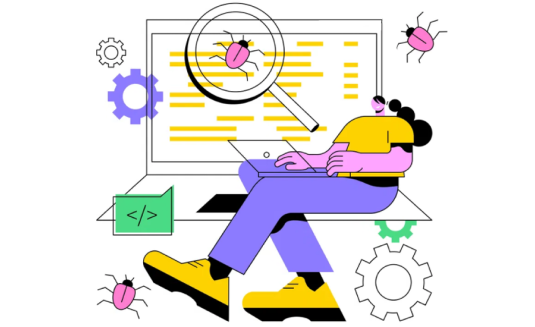Is your website designed for everyone? Perform an accessibility scan.
Manual Testing
What is manual testing?
Manual testing is the process of checking software or programs for errors, defects, and vulnerabilities by hand. During manual testing, QA engineers check whether the system operates according to specified requirements without any failures.

When you need manual testing
You need to quickly and efficiently test new functionality. Manual testing is used to test as thoroughly and well as possible, using knowledge, ingenuity and the human brain.
You need to satisfy all customers’ requirements. QA engineers play the role of the user of the program and inspect the product from the perspective of the audience conducting manual testing.
There is a need for a clear and easy-to-understand bug description
about the conditions for bug occurrence. A manual tester can write a
bug report in simple words that will be clear to other team members. It
is easier to fix bugs using such information.
There is a need for automated testing. In order to apply test automation, it is necessary to perform manual testing and create test cases. Then, based on it, QA engineers can automate repetitive testing processes to save time and money.
Certain elements such as user-friendliness and interface require subjective checking, which only humans can provide during manual testing.
If there is a small and short-term project, it is more cost-effective to apply manual testing than test automation. The reason is that test automation requires significant upfront investment at the beginning, while manual testing doesn't. Also, manual testing is enough to quickly and thoroughly check a product that is not too big or complex.
Types of manual testing we provide
Our company can offer different types of manual testing and focus on those that are important for your project.
Stages of testing

Platforms and tools we use
Tools:
VirtualBox, SnagIt, VMWare Workstation, Photoshop, Putty, OpenVPN, Browserstack, SoapUI, Postman, Swagger, Fiddler, Charles, Jing, Firebug, iFunbox, Android Studio, Xcode, iTunes
Bug tracking systems:
Jira, Mantis, Redmine, Pivotal Tracker, BugZilla, Assembla, Asana,
Basecamp, Podio, ClickUp, Monday.com, Trello
Platforms:
Drupal, Joomla, Magento, WordPress, WooCommerce, Shopify, Bitrix
Test case management tools:
TestLink, Zephyr, TestRail, Nuclino, Qase, PractiTest, Xray
Operating systems:
Android, Mac OS, Windows OS, Linux, iOS, Amazon Kindle
Our team understands that each product is different and requires its own unique approach, so you are not limited to this list of tools.
We can adapt and use the tools that suit you and your project.
Cooperation workflow
Intro call / chat
- Client’s description of the QA request
- Sharing of knowledge and documents related to the project
- Agreement on the deadline, testing scope and start of the collaboration
- Discussion on the required types of testing and qualification of the QA experts
Request analysis
Preparing an estimation
Preparing the CV, holding the interview
Start of the collaboration
- Defining the cooperation model and project duration
- Agreement on the deliverables and the form of reporting
- Receiving access to your software
- Signing the required documents
The project implementation stage
- Analysis of requirements
- Test planning
- Test documentation development
- Environment setup
- Test execution
- Test cycle closure
- Client’s description of the QA request
- Sharing of knowledge and documents related to the project
- Agreement on the deadline, testing scope and start of the collaboration
- Discussion on the required types of testing and qualification of the QA experts
Preparing an estimation
Preparing the CV, holding the interview
- Defining the cooperation model and project duration
- Agreement on the deliverables and the form of reporting
- Receiving access to your software
- Signing the required documents
- Analysis of requirements
- Test planning
- Test documentation development
- Environment setup
- Test execution
- Test cycle closure
Deliverables you can get
Each of the types of documentation is agreed with the customer and not all of them are required for every project.




